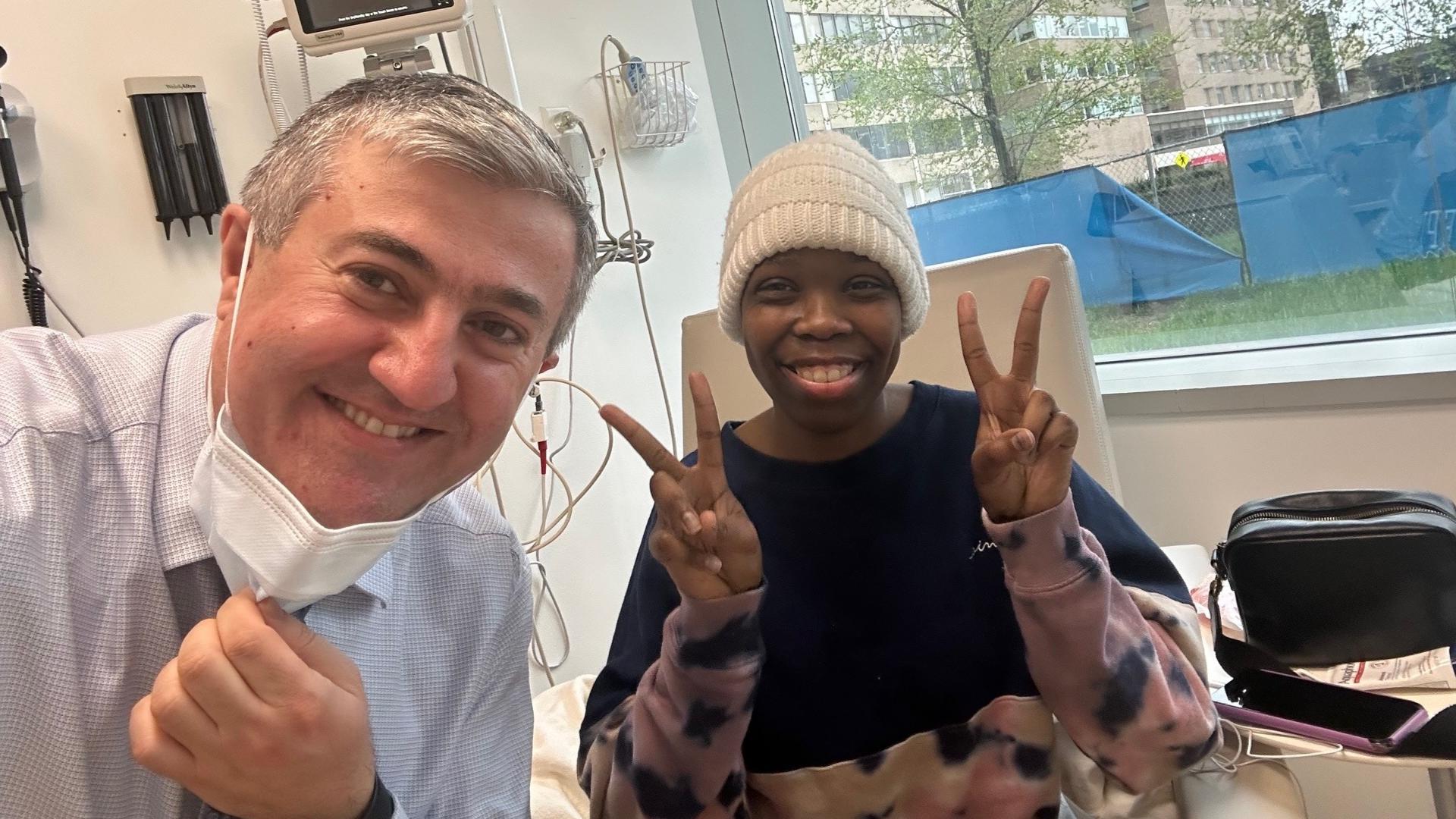CLEVELAND — Sickle cell disease causes oxygen-carrying red blood cells to become sickle — or crescent — shaped, which slows or blocks blood flow. It leads to excruciating pain and devastating damage to the body, often impacting the heart, lungs, kidneys, bones, joints, and eyes.
Annyanna Cash of Garfield Heights knows exactly what it feels like when a pain episode comes on.
"Sharp, shooting, stabbing," Cash said. "I can compare it to pregnancy for women when they are giving birth. Like, it’s worse than that or comparable for some."
When she became pregnant at 25, her experience with her disease became even worse.
Women with SCD are at higher risk for complications like preeclampsia, blood clots, anemia, and chronic pain. Pain episodes can happen more often during pregnancy and can last for hours, days, or weeks. She was put on a regular clinical regiment to keep her baby healthy until his birth.
Khalani was born healthy, yet needed to spend time in the NICU to detox from the lifesaving meds administered to his mother. All the nutrients had been depleted from her body, which required several surgeries over the course of a year to replace damaged cartilage in her hips and arms.
The experience left Annyanna fearing for her and her son's future. She thought she may not live to see him grow up, and despite always being a positive-minded person, she wasn't sure there would be a cure during her lifetime.
Although Khalani only carries the SC trait, Annyanna signed up for a research study after walking out of a post hip surgery appointment. She didn't want her grandchildren to ever know the mental, emotional, and physical pain of this disease.
"He's a miracle baby, for sure, and he keeps me going," Cash said. "And I knew I had to do this, not only for him, but for me, because I want to be there to grow up with him."
Khalani is now 9 years old. Annyanna was adopted, and spent years looking for her biological family, because she thought she could go through a bone marrow stem cell transplant to treat her disease.
As she was preparing for that procedure, she found her father on a DNA site, but then she learned about a gene therapy study at Cleveland Clinic that would allow her to use her own cells to heal her own body.
In January, she underwent the gene-editing therapy, which modified her stem cells to correct the genetic mutation that caused her disease. Her cells were taken and reengineered, and before they were given back, she underwent chemotherapy to clear remaining bone marrow and make room for the improved cells.
The RUBY Trial is the first use of CRISPR/Cas12, a gene-editing technology in a human study to alter the defective gene responsible for sickle cell disease. This precision tool is used to modify blood stem cell genomes to enable robust and healthy blood cell production.
Nine months later, there is no evidence of the disease in her body.
"This is really a functional cure," Dr. Rabi Hanna, chairman of the Department of Pediatric hematology-oncology and BMT at Cleveland Clinic Children's Hospital, told 3News. "I am very pleased and confident in using that word, and I intentionally use that word because this is what family and what patients are using nowadays. It is allowing them to regain their quality of life."
While the treatment doesn’t repair previous damage caused by SCD, it does seem to prevent further damage from happening. And while expensive, Hanna says this study is health equity in action, and being covered by Ohio Medicaid for patients who don't have insurance coverage.
"I would encourage every sickle cell patient to seek consultation so they can see if they can get access to a commercially available therapy," he added. "And I want to highlight our Ohio Medicaid. It has really been fantastic and (is) setting the standard nationally. Regardless of if it is a private insurance or a government-based insurance, we are seeing our government-based insurance payer accepting this gene therapy despite being expensive so that we can offer this therapy to many patients who need it."
It changed Annyanna's life and her future. She's since enrolled in nursing school and is pursuing her degree, wanting to give back, help others with SCD, and provide hope as well as change the narrative of health care and systemic racism.
Hanna says this trial is a start.
"This is when medical care can truly not only save their lives, but they can make them thrive so they can really become functional citizens and contribute and achieve their dreams," he said.
In the United States, between one and three million people carry the sickle cell trait, while approximately 100,000 individuals have sickle cell disease. This trait and disease are more common among certain ethnic groups, including African Americans, where approximately one in every 365 babies are born with sickle cell disease.

